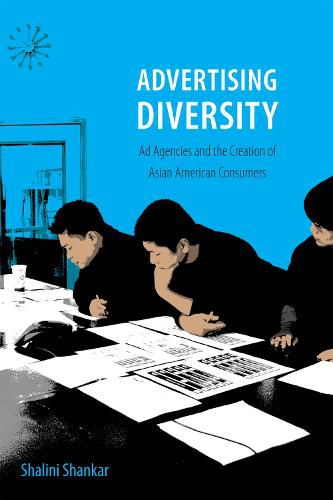Readings Newsletter
Become a Readings Member to make your shopping experience even easier.
Sign in or sign up for free!
You’re not far away from qualifying for FREE standard shipping within Australia
You’ve qualified for FREE standard shipping within Australia
The cart is loading…






In Advertising Diversity Shalini Shankar explores how racial and ethnic differences are created and commodified through advertisements, marketing, and public relations. Drawing from periods of fieldwork she conducted over four years at Asian American ad agencies in New York, San Francisco, and Los Angeles, Shankar illustrates the day-to-day process of creating and producing broadcast and internet advertisements. She examines the adaptation of general market brand identities for Asian American audiences, the ways ad executives make Asian cultural and linguistic concepts accessible to their clients, and the differences between casting Asian Americans in ads for general and multicultural markets. Shankar argues that as a form of racialized communication, advertising shapes the political and social status of Asian Americans, transforming them from model minorities to model consumers. Asian Americans became visible in the twenty-first century United States through a process Shankar calls racial naturalization. Once seen as foreign, their framing as model consumers has legitimized their presence in the American popular culture landscape. By making the category of Asian American suitable for consumption, ad agencies shape and refine the population they aim to represent.
$9.00 standard shipping within Australia
FREE standard shipping within Australia for orders over $100.00
Express & International shipping calculated at checkout
In Advertising Diversity Shalini Shankar explores how racial and ethnic differences are created and commodified through advertisements, marketing, and public relations. Drawing from periods of fieldwork she conducted over four years at Asian American ad agencies in New York, San Francisco, and Los Angeles, Shankar illustrates the day-to-day process of creating and producing broadcast and internet advertisements. She examines the adaptation of general market brand identities for Asian American audiences, the ways ad executives make Asian cultural and linguistic concepts accessible to their clients, and the differences between casting Asian Americans in ads for general and multicultural markets. Shankar argues that as a form of racialized communication, advertising shapes the political and social status of Asian Americans, transforming them from model minorities to model consumers. Asian Americans became visible in the twenty-first century United States through a process Shankar calls racial naturalization. Once seen as foreign, their framing as model consumers has legitimized their presence in the American popular culture landscape. By making the category of Asian American suitable for consumption, ad agencies shape and refine the population they aim to represent.